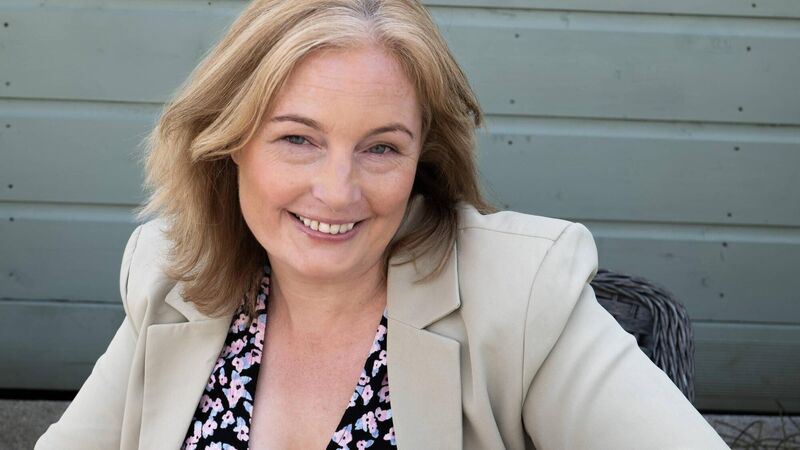I spent almost 18 years in foster care — the service did me no favours

Nearly 18 years in foster care left little Sadie Harpur with a sad but heartening story to tell. Now she has told that story in a book: 'The Hidden World of a Foster-Girl'.
Nobody told Sadie Harpur who was born first – she or her twin sister, Kizzy. But growing up with their foster-family — with whom they were placed before they were even a year old — the girls felt Sadie was the first arrival.
“We always knew it was me. Kizzy said she was sick of me and pushed me out!” Later, as a young adult reading her birth files, Sadie discovered they’d been right. This deep knowing, without even knowing how she knew, happened again when she was invited to the birthday party of a school friend who lived in a children’s home.
“The minute I walked in — the narrow corridor, the smell — I just felt this rush of ‘oh my God, I’ve been here before!’”
She told her foster-mum — Sadie calls her foster-parents ‘mum’ and ‘dad’ — and she said: “You couldn’t have been, we’d have been told.”
“It was only when I applied for my birth files and I read them in my 20s that I found out I had been there.”
In fact, by the time she was nine months, Sadie had spent time in two baby homes as well as a brief placement with her birth family.
Today, the 43-year-old lives in Wexford where she works as a special needs assistant (SNA) and is married to engineer Mossy — “he’s my rock”, she says. The couple have three children.
The story of her almost 18 years in foster care is told in The Hidden World of a Foster-Girl.
On the afternoon I interview her, Sadie is living the typically busy, immersive day of a mum of three with two kids still in their teens and another barely into their 20s.
“I’m taking my 15-year-old to Taekwondo. Then I’m collecting my 21-year-old off the bus from college.”
Later, she and Mossy will watch the Netflix series they’re currently hooked on with their dog, Lexie, snuggled between them. In her book, Sadie tells of a very different early life — of troubled periods of high anxiety when she suffered from learning difficulties resulting from undiagnosed dyslexia, along with bouts of depression, self-harm, suicidal thoughts, and violent outbursts.
With these experiences in her background, I ask what equipped her to now have a life of such stable contentment. “I would definitely say my foster parents — 100%. They always listened. They were always on my side.
“Growing up, I had so many different professionals in my life — all with their opinions on me — and I’ve realised if you don’t have the backing of kind foster parents, you have nothing.”
But while knowing she was fortunate “to have a foster family who lovingly guided me through my issues”, she also feels that the State’s foster care service “did me no favours and was a source of negativity in my life”.
Recalling social workers’ visits as a consistent feature of her childhood, she wishes these visits could have been more discreet. “They came, wearing suits, carrying briefcases.”
Bullied at school, this visibility in the South Dublin community where she grew up immediately marked her out as different.
“Children would ask why social workers were coming to visit us. Being made to feel so different from classmates and neighbourhood pals is a massive thing for any child … I desperately wanted to feel normal and fit in, but that was almost impossible with all this stuff open to public knowledge and speculation.”
It was also deeply unsettling.
“The social workers would sit at the table, take out their paperwork, and write. I always felt I was being assessed. When I was six, I said to my mum: ‘Would you turn the cameras off please?’ She said: ‘What cameras?’ And I said: ‘Everybody’s watching me — I know they are’.
“Mum believes because I had so many social workers coming in with inputs, and I had to go to assessment after assessment — they said I was low average ability, and I knew they were saying all that about me — that I didn’t feel secure. I was always afraid I’d be moved.”
Describing “high separation anxiety”, which especially kicked in anytime her foster parents went out, Sadie says: “I’d be scared they wouldn’t come back.” At other times, she recalls sitting on the stairs, holding and rocking herself, and calling out for her parents.
There was very little education for foster parents, very little education about trauma — that foster children and children in care are grieving.
“Just the other day I was talking with my dad about this, and he said he always knew the advice they’d been given was wrong, and that ‘you just needed us to come over, pick you up, and hug you’.”
Sadie feels very keenly that “as a foster child, you have no privacy” and believes children in care should have a right to know what is being recorded about them.
“If I went for tea with a social worker, or they rang to check how I was getting on, or when a social worker asked me personal questions about my sex life when I was 16, I didn’t know I would read about these things later in my files. I didn’t know it was all being written down. Reading it in my file later, it was so impersonal — you really feel you are just another number.
“I’d met my birth mother on and off over the years. I remember when I was in my 20s her saying she knew I’d self-harmed as a child — the social worker had told her. Yet if I asked questions about her, the social worker wouldn’t tell me. I found it hurtful and unfair that I didn’t get a choice about sharing my own information.”
Describing how “back then, once you reached 18 there was no after-care for foster children”, she was promised counselling many times but never got it. Sadie says: “At 18, the State effectively washed their hands off you. I felt I didn’t get the support I needed. It was like: ‘See you later, bye’. All my life they’d been telling me what to do, what I wasn’t allowed to do, questioning me about everything — and then all of a sudden they were just gone.”
In her book, Sadie writes: “I know there are examples of the fostering system in Ireland working quite well at times, but other examples show obvious systemic flaws — flaws that could, and possibly did, affect the lives and wellbeing of the children involved. I don’t believe any of those flaws are unfixable.”
She decided to tell her story because she wants people to know the hidden world of a foster child.
“As foster children we try to fit in, fit into society, to our foster family, our birth family. I’d love recognition that foster children are grieving, and that they get more support around that. I feel it’s really important children are allowed to vent their feelings.”
It’s partly why she loves working as a SNA, she adds. “I love being able to say to a child: ‘That sounds really tough’.”
- by Sadie Harpur with Jackie Hayden, €16.99.






